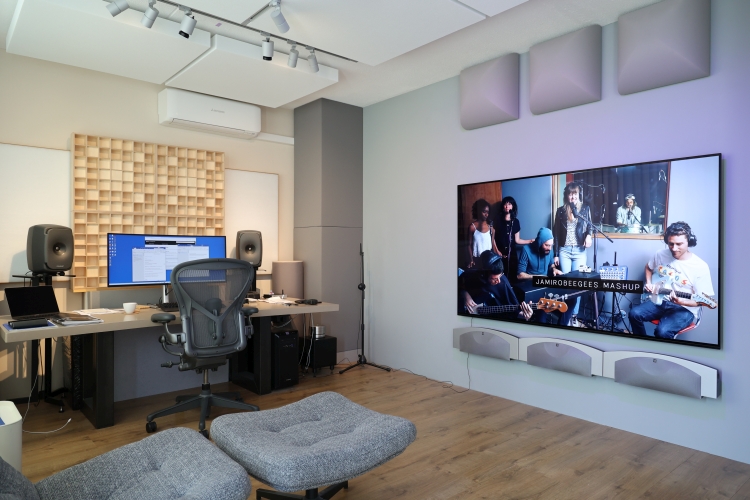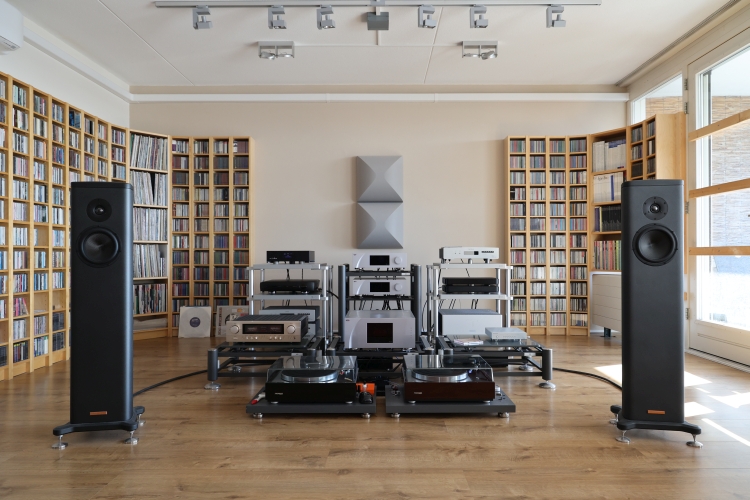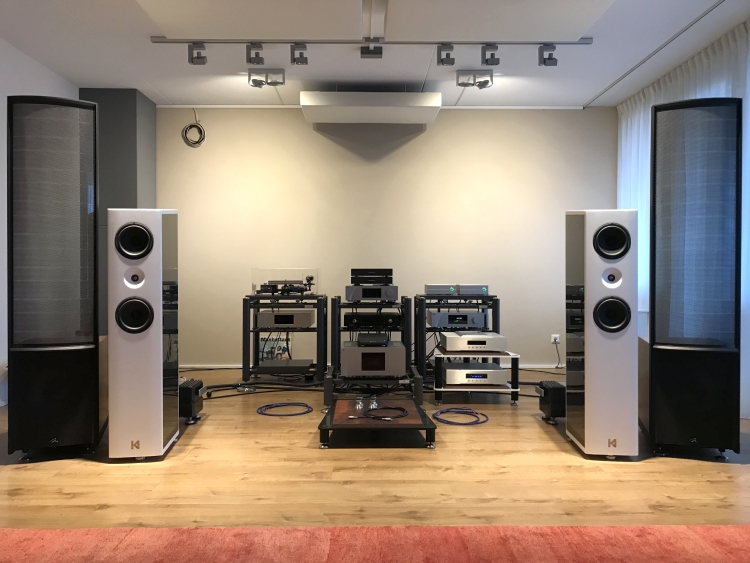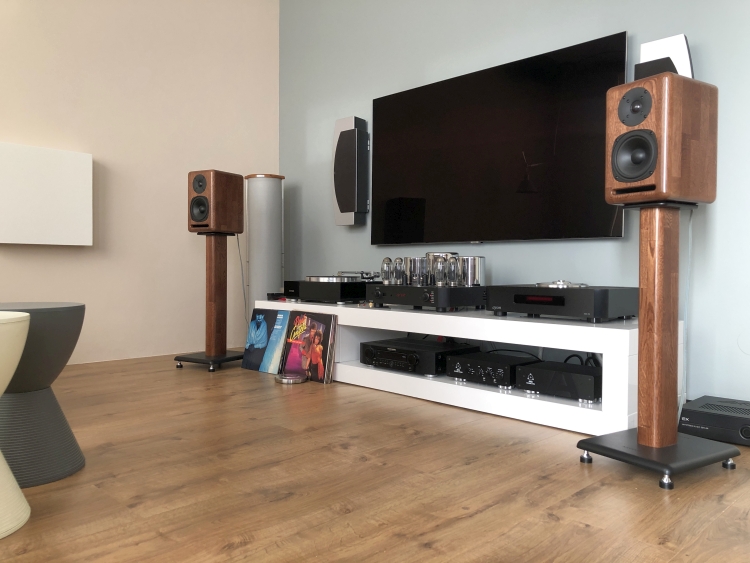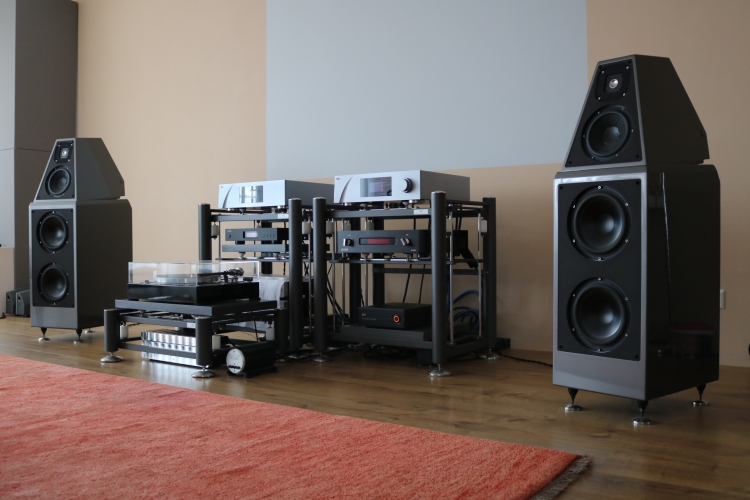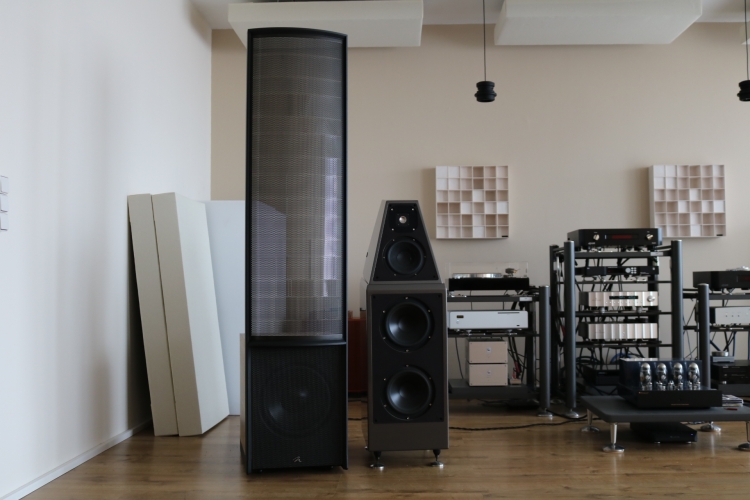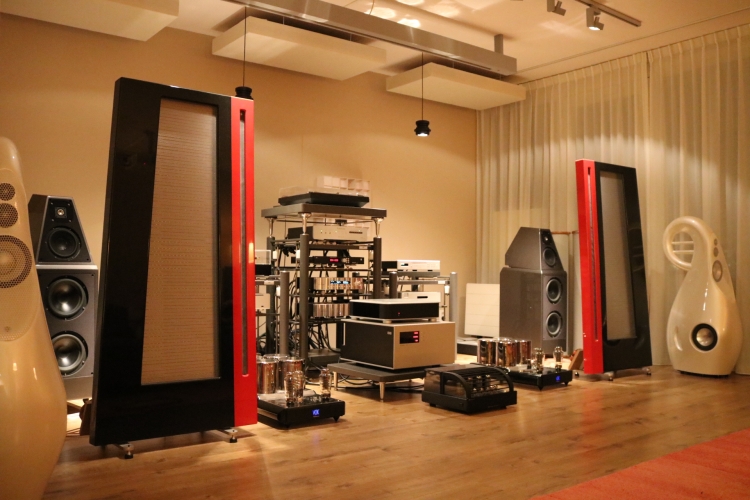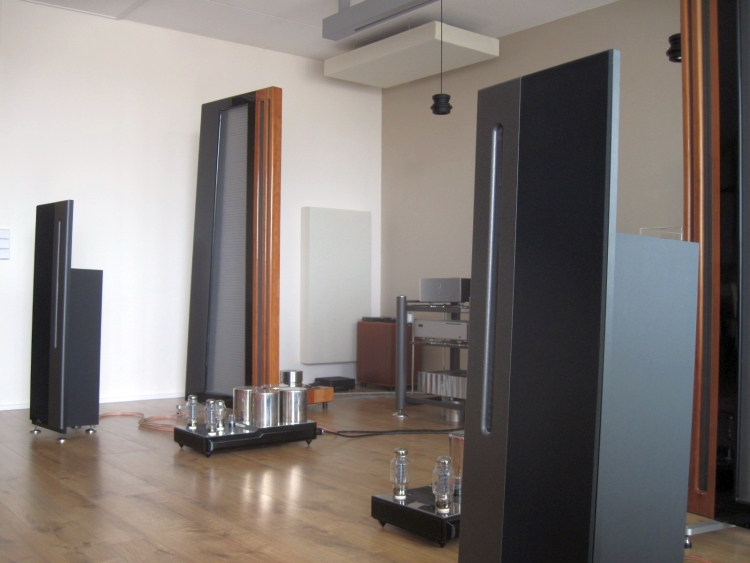HFA Audio Setup History 20 – Secondary Setup – March 2016 to May 2016
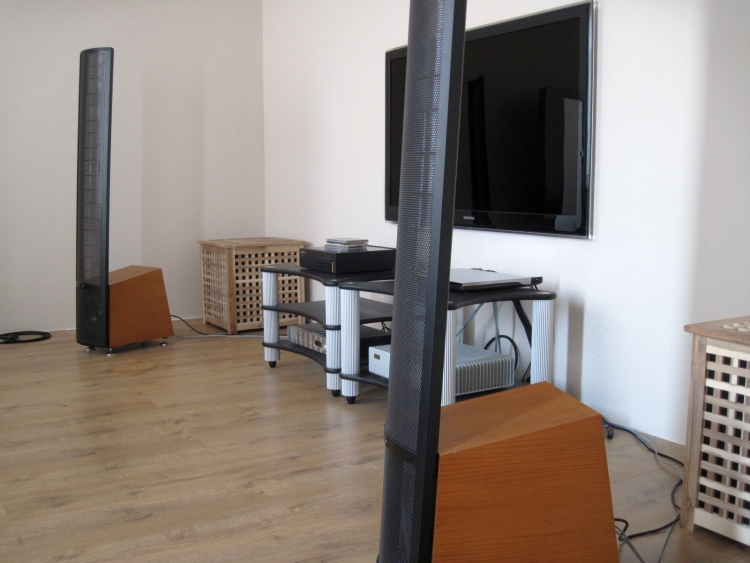
After completing the wall construction work, my new setup lasted only 3 months…
On the right is the new wall that I extended by closing the hallway, thereby creating a longer wall. This way I could set up the equipment sideways, creating more floor real estate in the process, which was my wish. Later I would realise that the closed off hallway made it easier to position the listening couch in the former hall, without it being in the way. Being aware of this made me want to rotate the system again.
Martin Logans, like any dipole speaker, need lots of space around them. The actual listening section of my secondary listening room is quite small: 420cm wide and 380cm deep. Still the Logans are placed as freely in the room as possible – the bass cabinets are 88cm from the rear wall and the stators are 120cm from the rear wall.
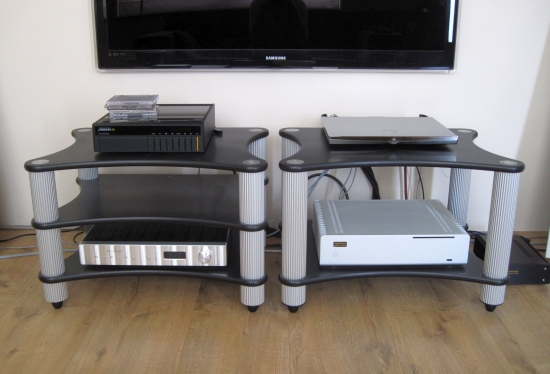
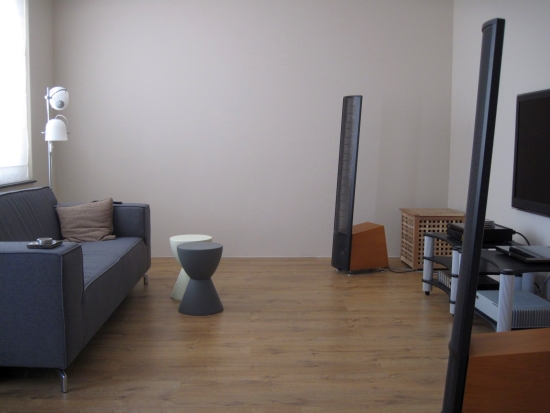
As a result, the listening position measured from my ears to the stators’ fronts is 210cm. This makes them almost sound like a near field system, but because the sound is super-smooth, it doesn’t sound “in your face”. Rather, the soundstage seems to be wider than the room itself and one is submerged in a cloud of sound. Imaging and focus are spectacular, even better than with any of my Apogees.
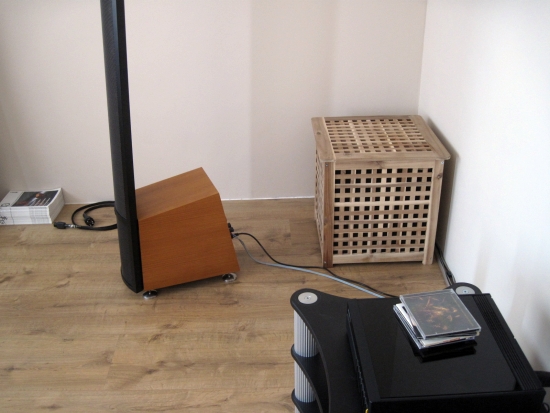
The boxes behind the speakers are originally Ikea laundry baskets, made into bass traps to tame a particular room mode (standing wave) in the bass due to my smallish room size.
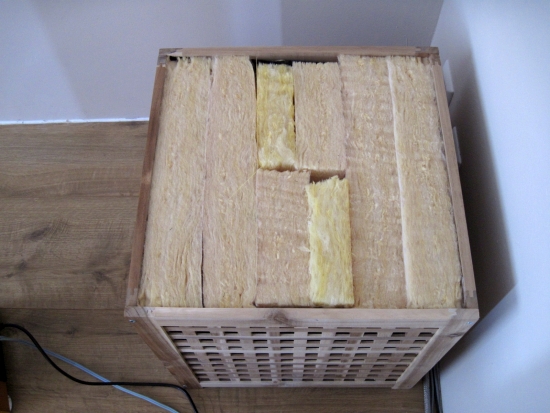
Logans can be beamy and overly revealing but with careful setup and matching with musical equipment this is a non-issue, as long as you don’t mind not hearing any soundstage depth when sitting off axis. Sure the speakers can be enjoyed with 2 or 3 people, but only the person sitting in the middle will have the amazing focus and soundstage layering that Logans seem so easily capable of. And of course these are no speakers to use when walking around the house because the treble drops off considerably as soon as you stand up.
That said I am still much impressed with the current Martin Logan sound. It’s very different from the Apogee sound: cleaner, more transparent and even less coloured, but they can also be a little clean and timbre isn’t as acoustically convincing. Still both renditions are perfectly valid and intrigueging for their own reasons. Ultimately I’d say the Apogees are better at sounding like live music and like to play louder and the Logans are better on an analytical level and they excell at low level listening while still conveying all the detail and articulation in the recording.
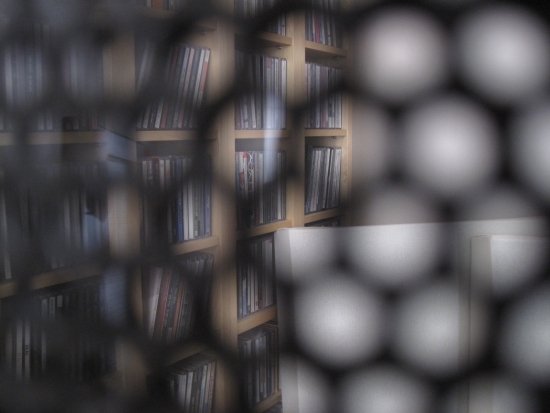
Martin Logan stators consist of 2 perforated metal plates with a plastic foil inbetween. The foil is transparent, and this gives the speakers much more flair than they would have if they were solid wood boxes. Even though they are just as tall as the Apogee Duettas, I’d bet that the Ethos pair have a much higher WAF.
The system is super-simple: just a music server and an integrated amplifier with streaming endpoint and DAC onboard. Bottom right are the AudioAanZee Reference Flow music server with its linear power supply and the Devialet 120 amp on top. Top left is a Meridian 506.24 CD player used as digital transport and bottom left is a Jeff Rowland Concerto preamp. The latter is not actually used at this moment.
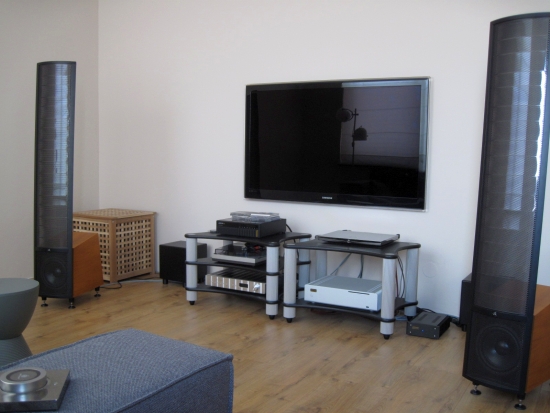
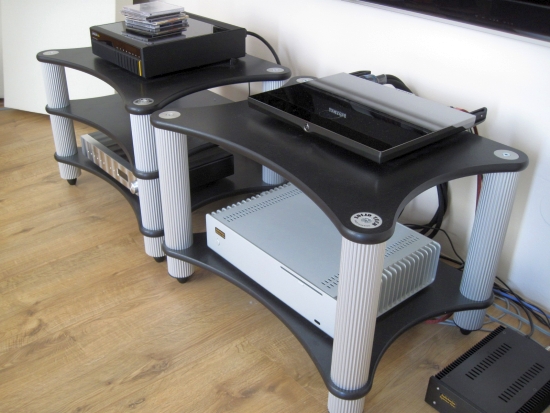
Unfortunately the room had two major room modes which were unescapable even with an abundance of bass traps.
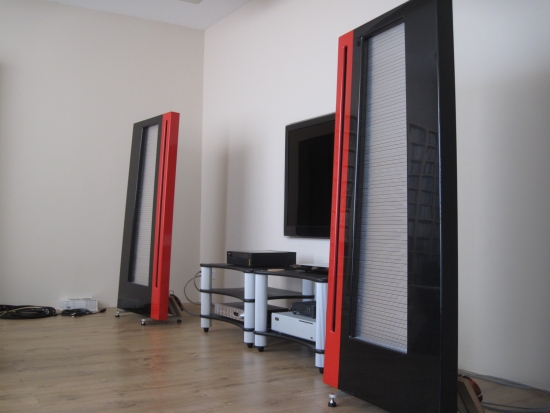
The Duettas faced the same room mode problems as the Ethoses in their first setup, but (due to their dipole design?) had less issues in the bass. They too exhibited a bass bump but it was of the nicely excessive loudness kind rather than the thumpy boomy kind.
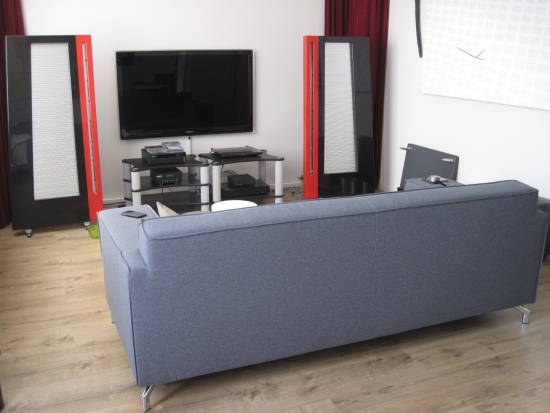
And when set up at the narrow end of the room the Duettas sounded impressively good, with no apparent bass issues at all.
The bass problems with the speakers set up at the long wall eventually urged me to rotate the setup back to how the Duettas were placed earlier along the narrow wall, with the listening position in the middle of the room, rather than against the back wall.
